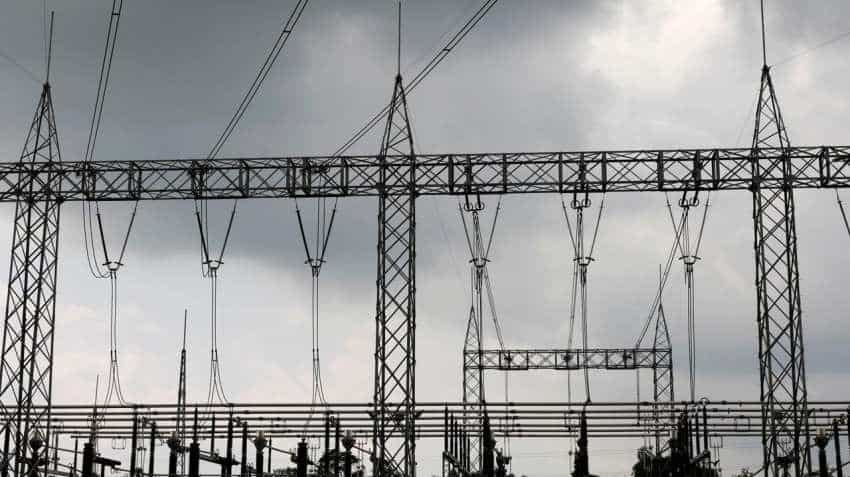CERC tariff relief for IPPs positive for power gencos: ICRA
ICRA said this order issued by the CERC would enable resolution for affected domestic coal-based IPPs aggregating to 14-15 GW having long-term PPAs with state distribution utilities and facing coal supply shortfall from domestic linkage sources.

Power regulator CERC allowing a tariff relief to independent power projects (IPP) affected by domestic coal shortfall is positive for the power generation segment, rating agency ICRA said Monday.
The Central Electricity Regulatory Commission (CERC) in its order on May 16, 2019, approved a tariff relief for coal-based power project of GMR Warora Energy arising from the use of imported / e-auction coal in lieu of shortfall in supply of domestic linkage coal under the fuel supply agreement (FSA) signed with Coal India.
This is with respect to the power purchase agreements (PPAs) signed by the company with Maharashtra State Electricity Distribution Company Ltd (MSEDCL) and Electricity Department, Union Territory of Daman and Nagar Haveli.
ICRA said this order issued by the CERC would enable resolution for affected domestic coal-based IPPs aggregating to 14-15 GW having long-term PPAs with state distribution utilities and facing coal supply shortfall from domestic linkage sources.
"The tariff relief approved by the CERC follows similar orders issued for other IPPs in the recent past and culminates a long-drawn process for domestic coal-based IPPs seeking pass-through of the higher cost of imported coal under the PPAs signed with state distribution utilities in lieu of shortfall in supply of domestic linkage coal," Sabyasachi Majumdar, Group Head - Corporate ratings, ICRA, said in the statement.
"More importantly, this order by the CERC clarifies that the projects using coal under the SHAKTI scheme are also entitled for compensation for any shortfall in supply of annual contracted quantities by CIL.
While the central government approved the use of imported coal because of the shortfall in supply of domestic coal and pass-through of the higher cost of the imported coal in tariffs in July 2013, the implementation of tariff pass-through was marred by significant delays, because of delays in issuing orders by the regulators as well as discoms contesting these orders at various forums.
This order by CERC follows the favourable order issued by the Supreme Court of India in April 2017 allowing tariff relief for projects affected by domestic coal shortfall under change in law.
The CERC has considered the modifications to New Coal Distribution Policy (NCDP) approved by the Government of India in July 2013, reducing the supply rate of coal (from 100% at 85% Plant Load Factor to 65% in FY2014 and FY2015, 67% in FY2016 and 75% in FY2017) from linkage sources as a change in law event.
Further, the SHAKTI policy notified by Government of India in May 2017, continued the supply rate at 75 per cent of the annual contracted quantity (ACQ), thus continuing the dependence on imported coal.
In its order, the CERC has also allowed carrying cost on the tariff relief approved for past years.
"While the approval for pass-through of the higher cost of imported coal is a positive development, the timely realisation of the tariff relief from the state distribution utilities would remain a challenge, given the weak financial position of the discoms in some of the key states and as the tariff relief component including carrying cost is likely to remain significant, Majumdar added.
For a 1000 MW in-land coal-based power project operating at 50 per cent PLF (plant load factor or capacity utilisation), the use of imported coal for meeting 25 per cent of its fuel requirement in lieu of domestic coal would increase the annual fuel cost of generation by about Rs. 130 crore at prevailing imported coal prices, ICRA said.
Get Latest Business News, Stock Market Updates and Videos; Check your tax outgo through Income Tax Calculator and save money through our Personal Finance coverage. Check Business Breaking News Live on Zee Business Twitter and Facebook. Subscribe on YouTube.
RECOMMENDED STORIES

Power of Compounding: How long it will take to build Rs 5 crore corpus with Rs 5,000, Rs 10,000 and Rs 15,000 monthly investments?

SCSS vs FD: Which guaranteed return scheme will give you more quarterly income on Rs 20,00,000 investment?

Rs 3,500 Monthly SIP for 35 years vs Rs 35,000 Monthly SIP for 16 Years: Which can give you higher corpus in long term? See calculations

Looking for short term investment ideas? Analysts suggest buying these 2 stocks for potential gain; check targets
07:23 PM IST










 Electricity regulatory seeks feedback on 'deterrent charges' for low coal stock at thermal power plants
Electricity regulatory seeks feedback on 'deterrent charges' for low coal stock at thermal power plants Regulator CERC allows Reliance Infrastructure firms BSES discoms to exit PPAs with NTPC Dadri-I power plant
Regulator CERC allows Reliance Infrastructure firms BSES discoms to exit PPAs with NTPC Dadri-I power plant Indian Energy Exchange launches real-time electricity market
Indian Energy Exchange launches real-time electricity market CERC debates on tariff structure for thermal power plants
CERC debates on tariff structure for thermal power plants Cyrus Mistry seeks shareholders support to stay on Tata Power's board
Cyrus Mistry seeks shareholders support to stay on Tata Power's board